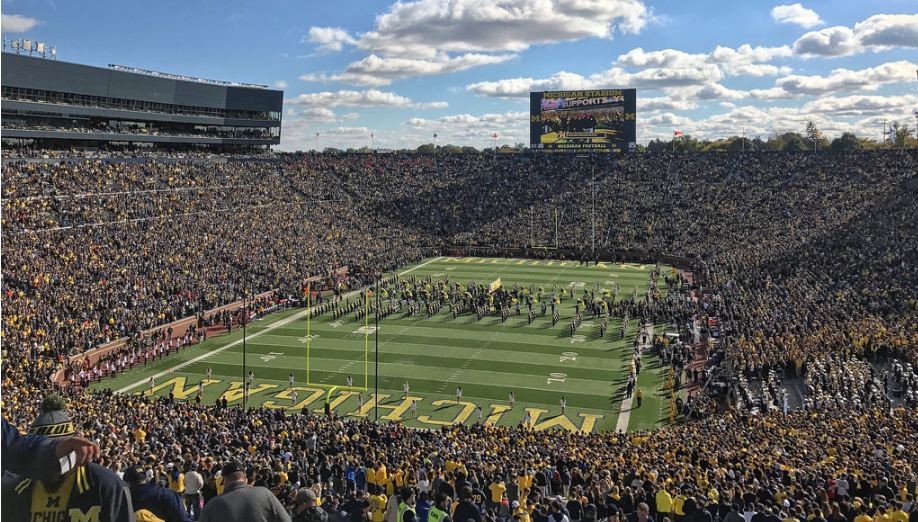So long to the NCAA

It takes a pretty special organization to lead even the current Supreme Court to rule unanimously that its most basic organizing principles are so outrageous that they have to be struck down:
The Supreme Court handed a unanimous victory Monday to Division I college athletes in their fight against the National Collegiate Athletic Association over caps it sought to impose on compensation related to education.
The court voted 9-0 to affirm lower court rulings that found that antitrust law prevented the NCAA from restricting payments to athletes for items such as musical instruments or as compensation for internships. The justices rejected the NCAA’s argument that its players’ amateur status would be impossible to maintain if they could receive pay, even for education-related expenses.
“Put simply, this suit involves admitted horizontal price fixing in a market where the defendants exercise monopoly control,” Justice Neil Gorsuch wrote for the court. . .
In allowing the injunction, Gorsuch wrote that the NCAA can ask lawmakers to carve out an exception for it.
“The NCAA is free to argue that, ‘because of the special characteristics of [its] particular industry,’ it should be exempt from the usual operation of the antitrust laws — but that appeal is ‘properly addressed to Congress,’” Gorsuch wrote.
“Nor has Congress been insensitive to such requests. It has modified the antitrust laws for certain industries in the past, and it may do so again in the future,” Gorsuch wrote. “But until Congress says otherwise, the only law it has asked us to enforce is the Sherman Act, and that law is predicated on one assumption alone — ‘competition is the best method of allocating resources’ in the Nation’s economy.”
The case was originally brought by Shawne Alston, a former West Virginia running back, and other student athletes. The dispute, known as National Collegiate Athletic Assn. v. Alston, No. 20-512, is separate from the ongoing controversy over NCAA rules that restrict athletes from being paid to play or for doing endorsement deals.
The latter rules have not yet come before the Supreme Court, and the court’s opinion did not weigh on their legality.
However, Trump appointee Justice Brett Kavanaugh suggested in a blistering concurrence to Monday’s opinion that those rules may also run afoul of antitrust law. He wrote that “The NCAA is not above the law” and that “The NCAA’s business model would be flatly illegal in almost any other industry in America.”
“Everyone agrees that the NCAA can require student athletes to be enrolled students in good standing. But the NCAA’s business model of using unpaid student athletes to generate billions of dollars in revenue for the colleges raises serious questions under the antitrust laws,” Kavanaugh wrote.
He added that it was “highly questionable whether the NCAA and its member colleges can justify not paying student athletes a fair share of the revenues on the circular theory that the defining characteristic of college sports is that the colleges do not pay student athletes.”
You don’t need a weatherman to know which way the wind blows. Although technically this is a narrow ruling, this case probably signals the practical end of the increasingly preposterous sham of “amateur” major conference college football and men’s basketball (these two sports account for about 98% of all college sports revenues). Somehow I doubt Congress is going to carve out an antitrust exemption that will allow top NCAA executives, conference commissioners, and athletic directors to get paid salaries of millions of dollars per year, by making it explicitly legal to continue to expropriate billions of dollars of unpaid labor each year from a few thousand college football and basketball players, most of who, totally coincidentally no doubt, happen to be black.
Three years ago I estimated that a fair wage per major college football player and men’s basketball player was about $750,000 per year, given the revenue they were generating. That figure would be a good deal higher now.
Here are just a couple of quick numbers on how the finances of college football and men’s basketball have spiraled into their current obscene form over the past half century:
(1) In 1970-1971, all college football television rights totaled $15.5 million per year, which is equivalent to just over $100 million per year in 2021 dollars. By the way this was considered a scandal at the time, since that amount of money just illustrated what a sham it was to consider this an amateur sport. Note that that amount of money was about $800,000 per year IN 2021 DOLLARS per Division I football program! There are currently dozens of ASSISTANT college football coaches who have salaries of more than $800,000 per year. The projected television rights for the new 12-team college football playoff ALONE are projected to be close to $2 billion per year.
(2) The University of Michigan’s entire athletic department budget in 1976 was $4.5 million. ($21 million in 2021 dollars). This was probably the largest in the nation at the time, and at that time the current economics of big time college sports were widely considered unsustainable, as this Sports Illustrated profile of Michigan’s pioneering athletic director Don Canham made clear. (What Canham pioneered was various methods of revenue maximization, although from today’s perspective those methods look like an elementary school bake sale). Today the school’s athletic budget is $200 million per year, and is projected to increase by around 50% over the course of the remainder of the decade.


